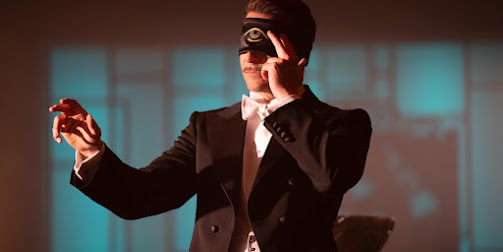In a way every story is a reunion story (okay, not all, but many). Characters meet only to be separated in some way by life or their own choices, and the tale to come is about them finding their way back together (or failing to do the same). It's Odysseus trying to get home to Penelope; it's Kim and Jimmy trying to stay together as a couple; it's Tony and Maria trying to get away.
Separation and reunion are a natural engine for story; take two lovable characters and separate them, and the audience is immediately all in on that journey. It's like magnets, really; once you've established a legitimate connection between two characters, all we want is for them to be together.
The problem is how to keep that separation alive in a way that remains grounded and believable. So many reunion stories end up stretching things out far too long and run the engine into the ground.
I call this the HOW I MET YOUR MOTHER problem. Pilot episode, we're told that this is the story of how young architect Ted Mosby met the mother of his children, to whom he is speaking in the future. The fact we haven't met the mother yet offers a fun twist, but still, it's a reunion show.
But then the show waits NINE SEASONS to reveal the identity of the mother. It takes 208 episodes, in fact, all the way to the finale itself. No show could sustain that idea for so long.
Even a ten episode arc can feel like a hot mess of forced separation. And meanwhile the audience is spending all its time trying to figure out how the characters will get back together, which is great in that it means you've engaged your audience, huzzah! But if you don't land the reunion well, all that energy invested sours into hostility.
Enter STATION ELEVEN. The pilot is built around 20something Jeevan Chaudhary meeting a little girl Kirsten and then trying to shepherd home while the world is falling down around them. But somewhere between the pilot and the second episode we learn that something terrible happened to Jeevan very early on. And so we spend the series waiting to find out what happened--a sort of reunion arc, but where the reunion is with death.
Then in the penultimate episode "Dr. Chaudhary", written by Will Weggel and Patrick Somerville, we discover that what we've learned is wrong, Jeevan did not die. And suddenly out of nowhere the finale is a reunion episode. And that's a lot more manageable to pull off. In fact, the surprise and joy of finding Jeevan legitimately surviving 109-the writers do a great job of earning that survival with the suffering and challenge he faces--means that we enter into 110 eager for the reunion in a whole different way. Instead of figuring out how it's going to happen, we spend the time excited for each of them and what their reunion will mean for them. Rather than detectives, we're more like friends at the surprise party.
And still the writers makes the moment of the reunion a surprise, by having Kirsten so focused on her comic and the girl she's showing it too we're no longer thinking of Jeevan, and having the traveling band singing a song nearby for their dead conductor, so that when Kirsten turns to them it's completely natural and Jeevan's presence totally not what we're expecting.
It's such a great bit of sleight of hand.
There's more reunion engine work in STATION ELEVEN--one character who you definitely think is going to be reunited with the rest who never is--which is another way the show keeps us from thinking about the idea of Jeevan and Kirsten ever reuniting; another who you don't even realize is on a reunion arc; and the "Station Eleven" comic book itself, which is reunited with so many different people in the final episodes.
Reunion Engines--they really can be great for story. But they're tricky to maintain. If you're looking for some fresh ideas, definitely check out STATION ELEVEN.














